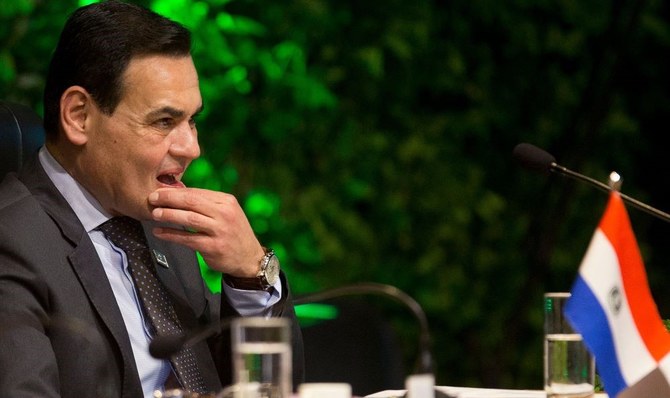
Few among us do not have a tale of a stolen bike: you leave work with your helmet fastened or come out of a shop after picking up some milk, and your bike has disappeared.
Tens of thousands of people reported a bike theft to police in England and Wales in 2024, so having the right lock is crucial to protect your two-wheeler. But just as everyone has their own preferred bike, choosing the right lock, from ultra-secure bolts to lightweight devices, is highly personal. Riders need to consider where they live, how attractive their bike is to thieves (they often look for more elaborate city and racing bikes), and how long they leave it unaccompanied. Only then is it possible to start pinning down what is needed.
The Metropolitan police urges people to use two locks instead of one, locking both the frame and the wheels to the stand and taking anything removable – lights, baskets and even the saddle – with you. Also, bear in mind that you may have to carry a lock around for some time, so weight is key.
The Sold Secure rating system, owned by the Master Locksmiths Association, judges the performance of any lock. It ranks locks from bronze (the most basic level) to silver (which aims to prevent the more determined attacker), gold (to stop dedicated attacks) and diamond (halting the most serious, including angle grinder, attacks).
Carl Ellis, who founded thebestbikelock.com after having one too many bikes stolen, doesn’t recommend getting bronze-rated locks because he says they do not provide enough protection in most cases. So spend as much as you can afford. He says you can get a lock at a medium security level for about £30, with more secure locks usually costing about £40.
If you have cycle insurance, ensure you are buying a lock approved by your insurer, says Richard Cantle, founder of Stolen Ride, a cyclist-run site that aims to tackle the issues around bike theft.
Here are our experts’ picks of the best bike locks.
Surrounded by the bright green and gold of barley fields, the braided channels of the Yarlung Tsangpo River, and mountains rising beyond, Samye is Tibet’s first Buddhist monastery. Founded in 775, the complex of chapels and stupa towers form a vast mandala – a symbolic and spiritual representation of the whole universe.
In the middle is a hall representing Mount Meru, the sacred mountain, the centre of everything. The ground floor of the hall is Tibetan in design, the first floor Chinese, the uppermost is Khotanese (the Silk Road kingdom on the edge of the Taklamakan desert). Walls are painted bright reds, yellows and whites, echoed in the vivid colours of prayer flags and sacred textiles, and gaudy images of demons – Tibetan Buddhism isn’t soft and quiet, it’s visceral and energetic. Pilgrims walk circuits around Samye, a thrum of muttered prayers and meditations hanging in the air.
Samye was a particular target of suppression during the Chinese Cultural Revolution in the 1960s. It languished for decades, but since 2010 it’s been the focus of a careful restoration project. When I visited in 2016 to film a documentary, one of the traditional roofs was being repaired. I was invited to join the work team, an army of 50 or so eclectically dressed Tibetans who’d given some of their holiday time to come and work on the historic buildings.
The flat roofs are made from hard-packed clay, known as aga. It has a deep sheen, created by many hundreds of thin layers of clay paste being stamped and buffed into one another. Once it’s polished and oiled, aga can last for decades in the high, dry air of the plateau. An aga roof can only be made in the traditional way and was, I was told, an act of devotion.
So, always keen for some participant-observation, I joined one of the lines of workers on the roof as the cameras started rolling. I was handed a length of plastic pipe, with a flat weight at the bottom. The leader started an upbeat call-and-response song and off we went, two shuffling steps forward, to stamp the weight on to the aga surface, a step back, stamp, turn, forward, stamp, turn, then shuffle back two, stamp and begin again. I got the hang of it after a minute, although it felt more like line dancing than devotion.
Here I was, on the roof of the world, making a new roof for the oldest monastery in Tibet
After five minutes my palm was on fire from the friction of the pipe running through my hand with each stamp. After 10 minutes the cameraman stopped rolling (“we have enough,” he mouthed to me). But everyone around me was in complete flow, singing, stamping and breathing together. I breathed it in, too: here I was, on the roof of the world, making a new roof for the oldest monastery in Tibet.
I asked some of the roof stampers if they were giving their time to the monastery because they wanted to keep Tibetan history alive. They shook their heads and smiled – the question was too political to answer. Were they proud of their role in rebuilding this ancient monastery? They frowned at me in puzzlement – to express pride would be to make it about the self, and this work was about emancipation from self. These hours stamping aga were shuffling steps towards Enlightenment. They weren’t proud, they were thankful. As I doused my raw hand with antiseptic, I realised that I was, too.












